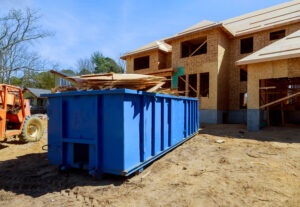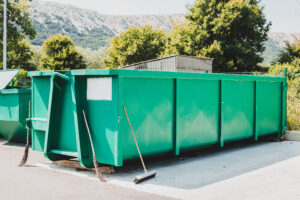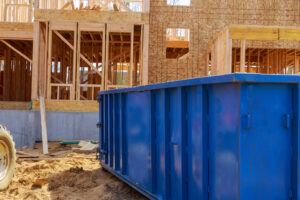The first time I rented a dumpster, I made a rookie mistake that still makes my wallet cringe. Convinced I needed a 30-yard behemoth for my bathroom renovation, I watched in dismay as the massive container arrived, dominating my driveway like some industrial-age monument.
Three days and several hundred dollars later, the project was complete—with the dumpster sitting three-quarters empty. Lesson learned the hard way.
That expensive education taught me something valuable:
dumpster rental isn’t about going big or going home. It’s about precision—finding that perfect match between your project’s actual needs and the container that fulfills them without excess. After five renovations and countless conversations with waste management pros, I’ve gathered insights worth sharing for anyone facing their own debris dilemma.

Pick The Right Size Dumpster For Your Needs
The Psychology of Dumpster Selection
We rarely talk about it, but there’s a peculiar psychology behind choosing a dumpster size. Most of us instinctively overestimate what we need—partly from fear of running out of space mid-project, and partly because bigger just feels safer.
“People come in asking for containers that could handle clearing out Buckingham Palace when they’re just redoing a powder room,” laughs Vince Delgado, whose family has operated a waste management company for three generations. “I always ask them to walk me through their project step by step. Usually, that conversation cuts their perceived needs in half.”
This tendency to supersize comes from a good place—the desire for smooth project completion—but it’s costly in both financial and environmental terms. Each oversized container represents wasted fuel in transportation and unnecessary expense for the renter.
The Forgotten Factor: Time
One element frequently missing from dumpster decisions is project duration. The length of your rental directly influences the ideal size.
“For a weekend blitz, you might actually need a larger container than a month-long project,” explains Delgado. “With time constraints, everything comes out at once. With longer timelines, you might have opportunities for sorting, donating, or alternative disposal that reduce your overall waste volume.”
When my neighbor tackled her garage—thirty years of accumulated everything—she opted for a modest 10-yard container but kept it for two weeks. This gave her time to list valuable items online, coordinate donation pickups, and properly sort recyclables. The result was significantly less landfill impact than a rushed approach would have created.
Size Translations: What Real Projects Actually Require
Forget abstract cubic yardage for a moment. Here’s what different projects typically generate in real-world terms:
Bathroom Renovations: Less Than You Think
The average bathroom remodel—complete with torn-out tile, old vanity, toilet, and tub—typically fits comfortably in a 10-yard container with room to spare. Those fixtures create visual bulk but relatively modest volume once broken down.
After my expensive lesson, I handled my next bathroom renovation with a 10-yarder. Even with unexpected discoveries (who puts carpet on bathroom walls? The previous owners, apparently), everything fit with space remaining.
Kitchen Overhauls: The Deceptive Middle Ground
Kitchens are trickier. Cabinets create substantial volume but can often be broken down. Appliances consume significant space but might be candidates for donation or special recycling programs.
For most standard kitchen renovations, a 15-20 yard container hits the sweet spot. This accommodates cabinets, countertops, flooring, and wall material without excessive space.
“Breaking down cabinets rather than tossing them whole can cut your needed dumpster size by 30%,” notes Delgado. “Five minutes with a hammer saves significant money.”
Whole-House Cleanouts: The Variable Giant
These projects have the widest variance. A minimalist’s home might require merely a 20-yard container, while clearing a collector’s residence could demand multiple 30-yard units.
The key differentiator isn’t house size but contents density. My friend Clara recently cleared her grandmother’s 1,800 square foot home—filled with seven decades of possessions—requiring two 30-yard containers over three weeks.
Beyond Size: The Questions That Really Matter
The perfect rental requires asking better questions than simply “how big?”
Weight vs. Volume: The Hidden Calculation
“The most misleading aspect of dumpster rental is focusing exclusively on volume,” explains environmental engineer Marian Jefferson. “Certain materials—concrete, shingles, dirt—reach weight limits long before filling the space.”
This matters because most companies set strict weight limits. Exceed them, and you’re looking at substantial overage charges that can double your rental cost.
For demolition involving heavy materials like tile, brick, or concrete, specialized “heavy material” containers—usually smaller but designed for weight—are often more economical than standard options.
Logistics That Protect Your Property
The practical aspects of placement significantly impact both your property and project flow. Important considerations include:
- Surface protection (special equipment exists to shield driveways)
- Access points relative to your main work area
- Duration of the rental and weather considerations
- Local ordinances (some neighborhoods restrict visible dumpster placement)
Finding Your Perfect Match
The right dumpster isn’t the biggest or the cheapest—it’s the one that aligns perfectly with your specific project needs. By resisting the urge to oversize, considering the nature of your materials, and planning thoughtfully for placement, you’ll achieve that rare rental satisfaction: a container that’s filled just right as your project wraps up.
And trust me—there’s something oddly satisfying about seeing your dumpster filled to the brim without overflowing. It’s tangible proof that you’ve mastered the subtle art of project planning, saving money and resources in one precisely calculated decision.




